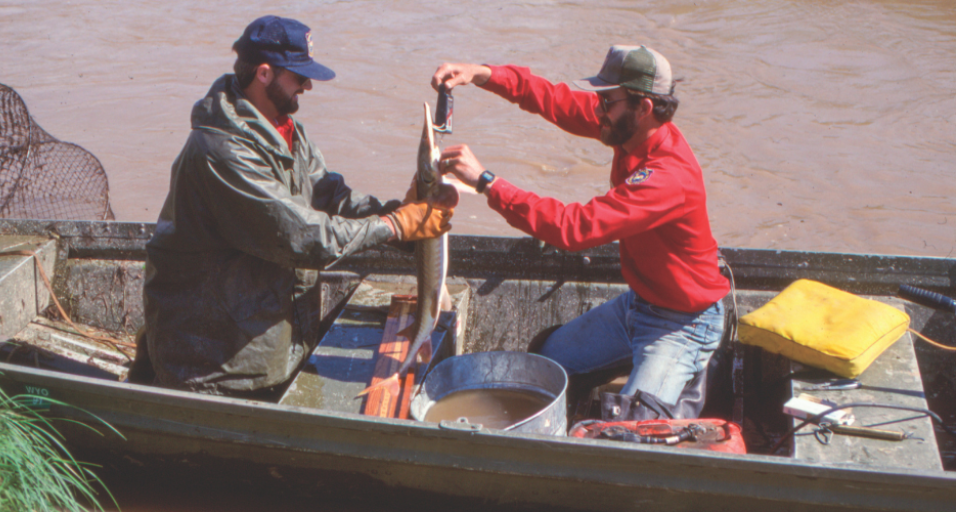What do you want to be remembered for?
As we go through life, it’s hard to know what people will remember about us when we’re gone, if what we do will matter for future generations or if we’ll leave a legacy. Sometimes the things we do or create sit and gather dust, and if we’re lucky they are rediscovered and valued after we’re gone. Occasionally, our impact can start to become clear while we’re still around to see it. Fortunately, this was the case for LuRay Parker.
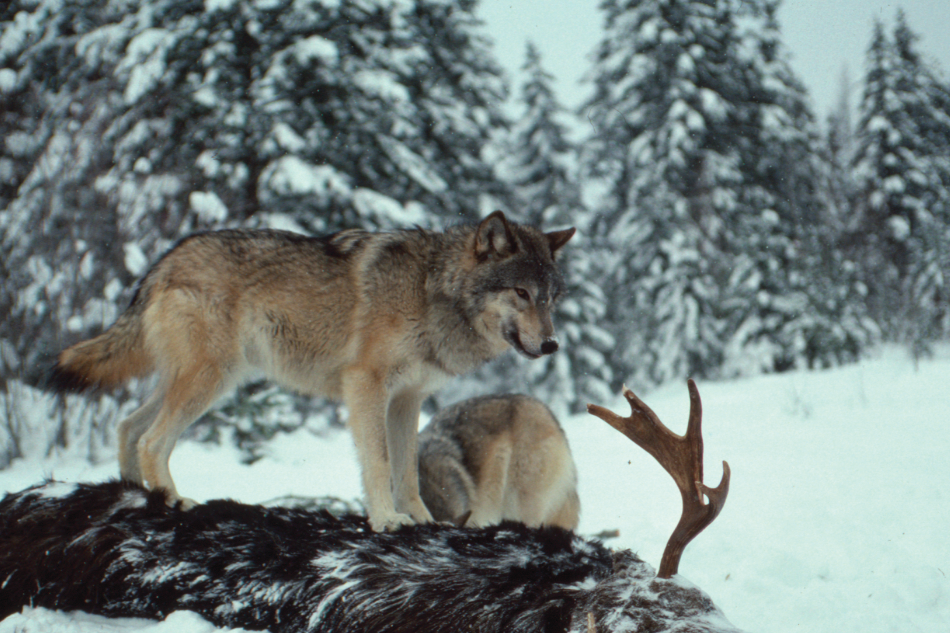
This photo taken by Parker shows two gray wolves standing over a moose kill in the snow.
For nearly 30 years, Parker was the photographer for the Wyoming Game and Fish Department. Game and Fish has had few positions dedicated for photographers since the end of his tenure, and even then, those positions have never quite been the same.
Instead, many of the photographs Game and Fish use have come from employees with other duties or from freelance photographers. Much like the images he produced, Parker and his position were unique.
WORKING IN SOLITUDE
For weeks at a time Parker was on the road, often traveling alone in the most remote areas of Wyoming. His pursuits took him far and wide, exploring the nearly 100,000 square miles within the state’s borders. He could wait hours for a single animal to move into the right position, for a herd to emerge from behind a shadow or for any wildlife to show up at all, just to capture the perfect image. Parker’s son, Scott, remembers his dad’s dedication to his job.
“He enjoyed it. He was an outdoorsman. He knew what he needed to do to get the shot, no matter the weather. He would sit there and wait — a long time,” he said.
Parker’s solitude was mostly a non-issue — until it wasn’t. Scott bailed his dad out from a tough situation toward the end of his career.
“He was up taking photos of the waterfalls in Yellowstone National Park in the winter, alone. In the wintertime in that area there’s no one, especially back then. He slipped and hurt himself, badly, and basically had to save his own life,” Scott said. “He crawled back to his truck, a stick shift, and drove himself back to the hospital with a broken leg. I had to drive and help him get his truck back to Cheyenne.”
His tendency to work alone also was known throughout Game and Fish. Grant Frost, a wildlife biologist with Game and Fish for more than 30 years, started with the department just a couple of years before Parker retired. While he didn’t know Parker well, some memories persist, including those of his lone-wolf nature.
“LuRay was always out and about in the field taking photos,” Frost said. “He was a pretty solitary guy. His old Ford truck was set up for travel, to use as a photo blind and to live in — with not much room for passengers.”
Game wardens and biologists have long been considered as the quintessential field personnel — the stalwart sentries of the backcountry. But Parker may have spent just as much time in the field, spanning beyond individual regions and districts into the scope of the entire Cowboy State, with impacts reverberating through the next generation.
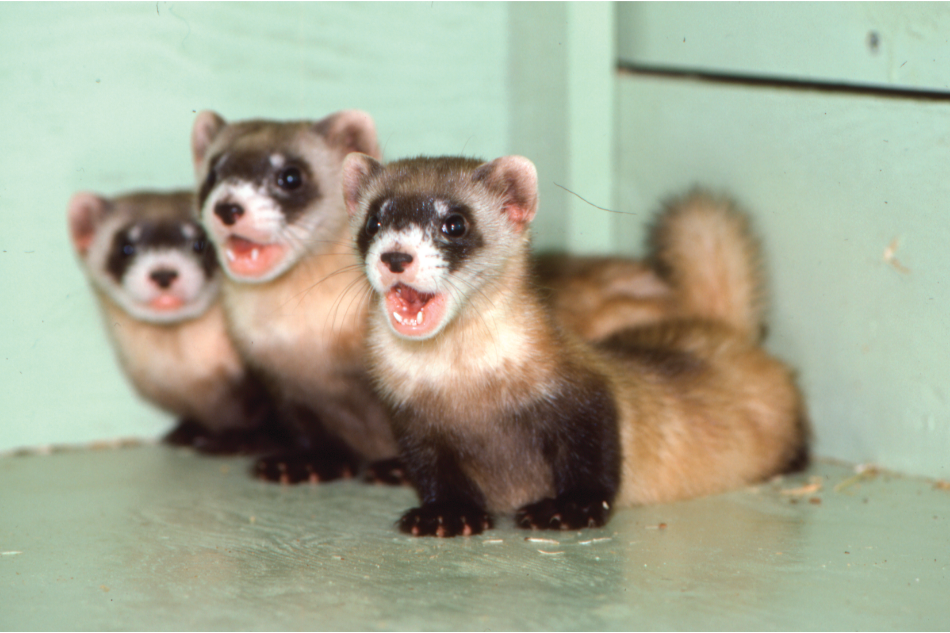
Parker was instrumental in documenting the recovery of black-footed ferrets in Wyoming. This image of young ferrets was taken in the 1980s.
Along with documenting years upon years of changes in Wyoming landscapes and wildlife, Parker served as witness and documentarian to arguably two of the most important conservation efforts in North American history — saving black-footed ferrets from the brink of extinction and the reintroduction of wolves into Yellowstone National Park. His photos added invaluable additions to these stories, as well as sometimes standing on their own. One of the most frequently used cliches in the world is, “a picture is worth a thousand words.” Though perhaps a tired phrase, it exists for a reason. Photographs tell stories in ways words sometimes can’t.
“A person can hear all day about how beautiful a landscape is, how majestic a mule deer looks or how tragic it is to see wildlife mortalities,” Frost said. “It’s hard to fully understand these scenes and the feelings they invoke until you see them for yourself. That’s what a great photograph can provide — perspective.”
A BYGONE ERA
Parker’s career, which spanned from the 1960s to the 1990s, fell during a now bygone age of photography — one when those looking to get the perfect photo had to lug more equipment around than photographers do now. They also did it without the immediate gratification of knowing if they got the shot. In the era of film, not only was the number of images determined by the amount of film rolls one could carry in a backpack, but a photographer could — and needed to — take numerous photos of one subject understanding that most or all of them might not turn out. Photographers did not benefit from being able to see images immediately, adjust their settings based on the image or delete images to make more room on a memory card. Developing film could be expensive and could take days or weeks after the image was captured. Cameras in Parker’s day did not have automatic settings or built-in editing capabilities. In many ways, this makes Parker’s images even more impressive.
Frost interacted with Parker more through his photography than with the man himself. Parker’s photography was heavily featured in Wyoming Wildlife, but it also was frequently displayed around the Cheyenne office. As a hobbyist photographer, Frost appreciated seeing them, maybe more than most.
“LuRay was a professional. He knew so much about the technicals — settings, lighting, timing,” Frost said. “You really had to know what you were doing shooting in film, and LuRay had all the skills and experience to get the shot and to get it right.”
But who was the man behind the lens, behind the photo credit in the magazine’s cutlines?
In his personal life, Parker was a family man and as much a photographer at home as at work. Parker created boxes upon boxes of family photos and videos, always had film in the refrigerator and developed photos in his basement darkroom. As for how his work affected his home life and his family, Scott remembers stretches of LuRay’s absence and trips together as a family.
“When he was home, he was just like any other dad,” Scott said. “We’d go on family vacations together every summer. But he wasn’t home a lot — he was always out taking pictures.”
Occasionally, Scott was able to join in on the work and see his dad’s process, gaining insight into Parker’s devotion to his craft.
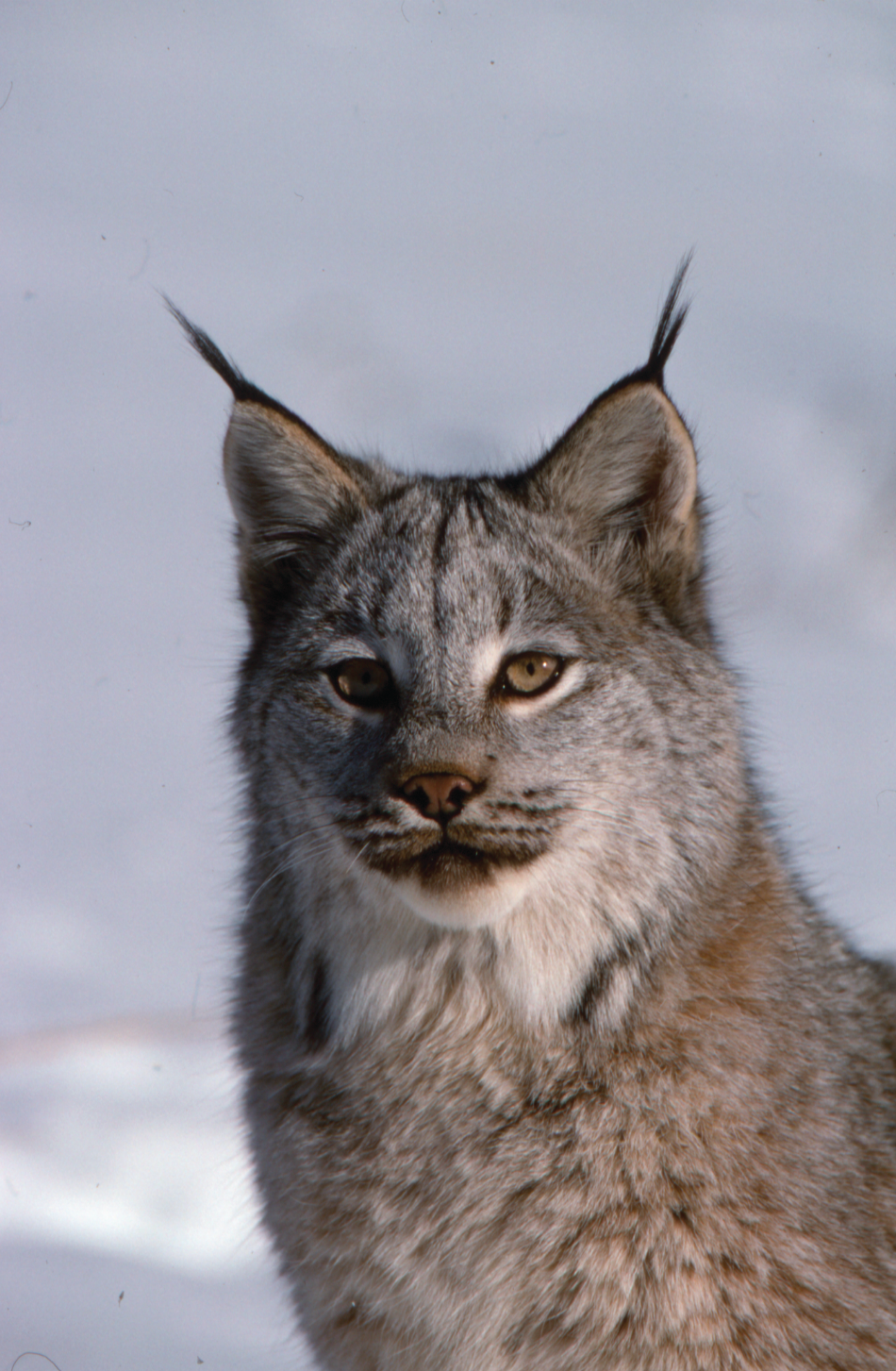
Parker captured this image of a lynx in January 1994.
“Back when you could take your family members with you to work, I went on a trip with him to Yellowstone. He was up at 4 a.m. to get out there and get ‘the shot.’ I sat out there with him one morning for a little bit, and just ended up cold. I told him, ‘I don’t know how you do that,’ and he said ‘You do what you need to do to get the shot you need,’” Scott said.
This year marks 30 years since Parker retired and 26 years since his passing. He was diagnosed with cancer soon after he retired.
“The summer before he died, we took one last trip through Yellowstone. He wanted to visit some of his old haunts one last time. It was a fun trip, kind of like a last hurrah. He knew he was dying,” Scott said. “He wanted to last long enough to see my sister graduate with her master’s. He got to see it, but lived only about a month longer than that. He was 64. I wish he was still here.”
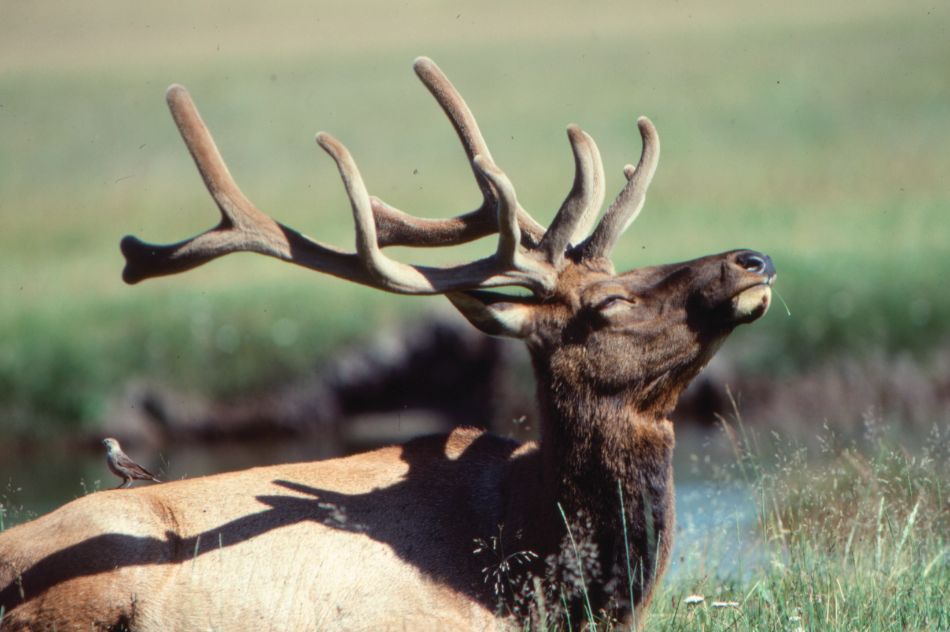
A 1980 photograph of a bull elk in velvet with a bird resting on its back.
Scott said his dad enjoyed his short retirement, traveling with his wife and tinkering with his Macintosh computer. Scott thinks his dad would have loved to experience the expansion of digital photography.
“Digital photography was just starting to spread, but it didn’t really take off until after he died in 1999. He would’ve loved it, he would’ve had a ball with this stuff,” Scott said.
When Parker started with Game and Fish in 1969, he had no way of knowing he would become a legend, at least in Wyoming.
“He didn’t go into this job thinking he’d be part of Game and Fish history,” Scott said.
“It was just a job, and he was really good at it. When you do something that you love, it’s not work. And he loved what he did.”
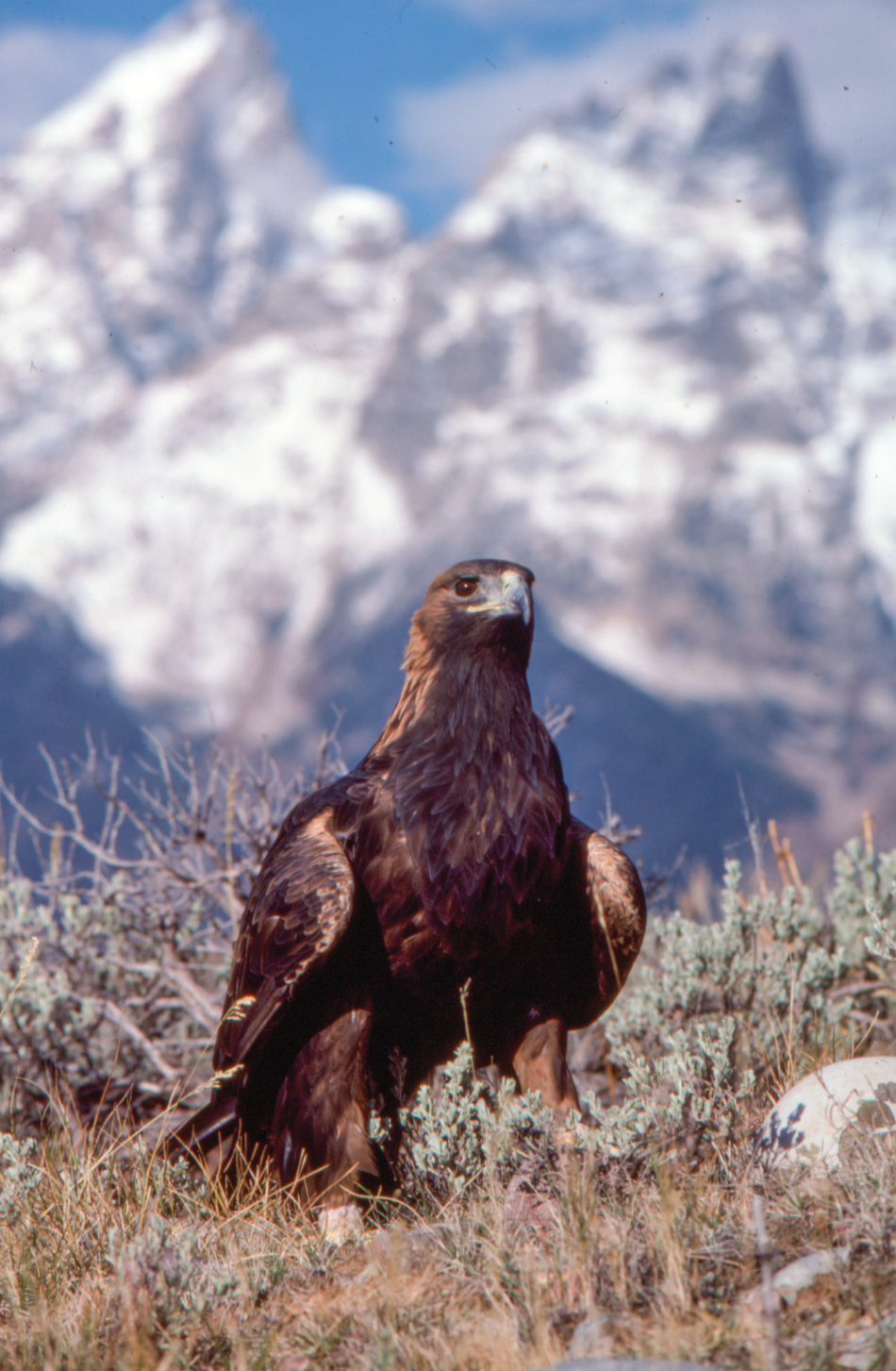
A golden eagle is spotted on the ground with the Grand Tetons in the background.
PRESERVING THE LEGEND
Parker’s work can still be found, and many of his images have stood the test of time. Quite a few of his images rival modern photographs taken with high-tech equipment — a testament to his talent. However, Parker’s images are not seen as frequently as they were, replaced by more recent, digital images. Though incredible, his work from long-gone decades has suffered in the way of VHS and 8-track tapes, inevitably being recognized as dated. In many cases, the images are locked away in slides — a medium rendered nearly useless in a digital world. Though technology has moved on, new tools also have provided a way to preserve history. Scanning technology allows us to scan and digitize old slides.
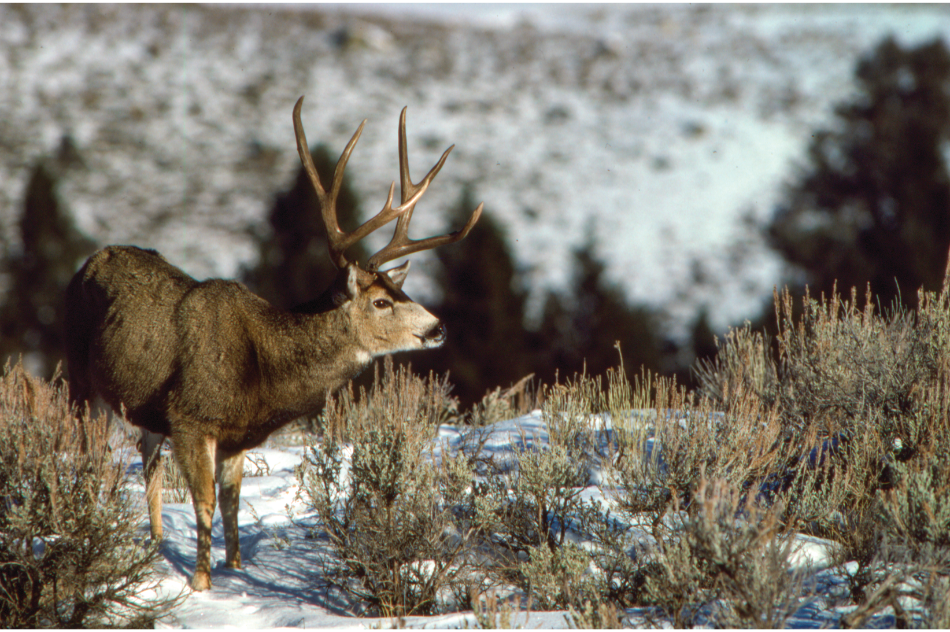
A buck mule deer photographed in 1989.
As we digitize Parker’s slides, we reveal bit by bit more glimpses into an era gone by. Many of the challenges we face today have persisted through time, even if they don’t look exactly the same. Historical photography can help provide insight into what those who came before us did to address those issues, and it can create and strengthen connections we have with the past. Parker’s collection serves as the only record of some of Game and Fish’s work in action, as well as the progression of projects, facilities and habitats over time. He also has provided us with a window into what used to be and what could be again. These images and the connections they create are just a part of Parker’s legacy, and Scott believes that toward the end of his career, Parker had a sense of his impact.
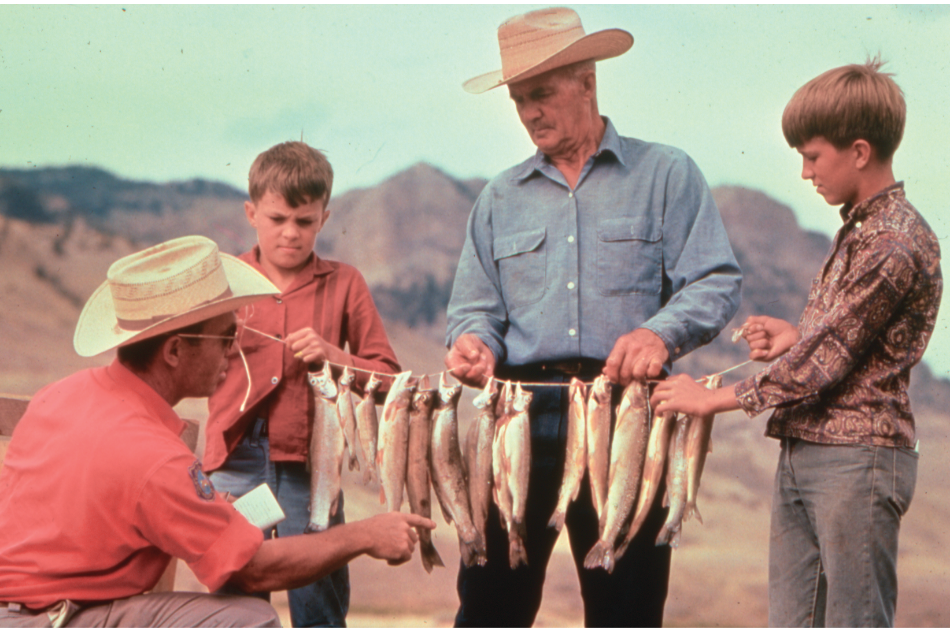
Parker often photographed the daily work of Game and Fish staff, like this warden checking a string of fish.
“His work lasted longer than he did. And he made a name for himself, whether he knew it or not. But I think in the end he did. Pictures last forever; it’s just a matter of remembering who took them. Everyone should be so lucky to leave something like that behind,” Scott said.
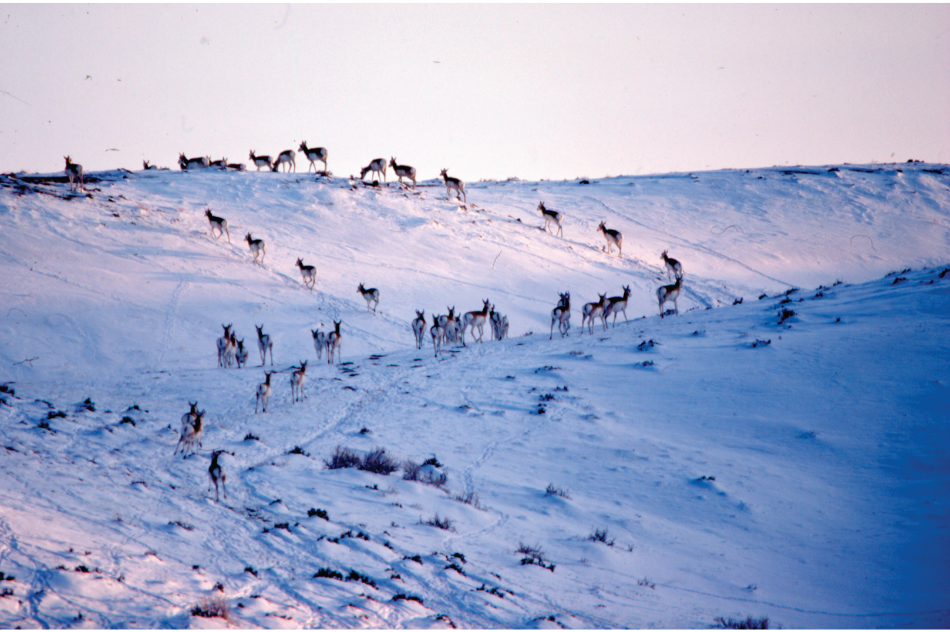
This 1984 image shows pronghorn moving through snow in the winter.
Although we probably won’t see a substantial resurgence in the use of these photos in modern media, there is value in preserving what we can of the past, allowing it to live on and learning from it. LuRay Parker and his work may yet still have lessons to teach us.
— Stephanie Estell is the statewide information specialist for the Wyoming Game and Fish Department.

